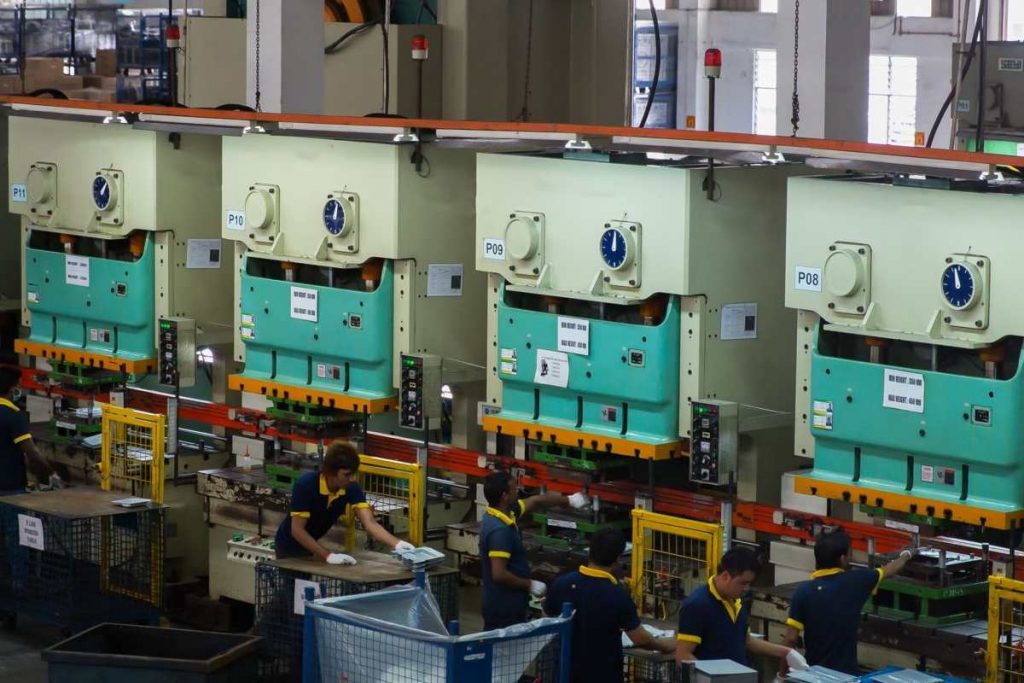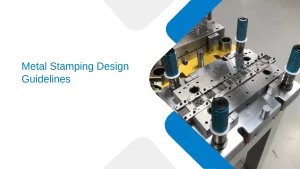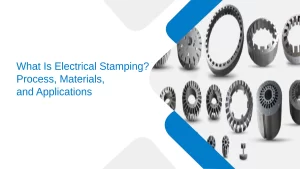Explore the Various Benefits of the Transfer Die Stamping Process
- Progressive Die Stamping |
- Sep 6, 2022

Metals are pressed into varied shapes in the metal stamping process. The processes utilize standard methods of production for the creation of catalog models. The facilities are outfitted with varied equipment like transfer die stamping to meet the customer’s needs.
The product catalog is considered standard, with parts that come in predetermined shapes and sizes. However, some components do not fit every industry requirement. For example, a product may require higher distinctive tolerances not guaranteed in the product specifications in the catalog.
Additionally, the materials required in part might not be among the ones utilized under standard options. For example, the parts are mainly used for electrolytic capacitors, aerospace components, and prosthetics that need components made out of tantalum. It is not found commonly under the standard portions due to the use of its specific purposes.
The quality control of the processes ensures adherence to desired levels of tolerances, unique shapes, finishing, components, and more. You cannot get whatever you had selected from the catalog by selecting the transfer to die stamping designs and another significant tailoring tool for the project as you have greater control to make sure that the parts meet your requirements.
Transfer Die Stamping Basics
The stamping process of transfer dies is similar to that of progressive tools; however, the portion is free from any type of metal strip. Instead of feeding the element through its entire series of stations, the mechanical transport system is used here for moving the parts from station to station. The transfer dies include several dies, single die, or machines that form the entire line of production.
The transfer press process starts with a metal strip fed into the initial station wherever the blank is cut. The blank then gets transferred through the varied forming stations mechanically. The stamping process is highly versatile, featuring several parts such as cut-outs, pierced holes, chamfering, knurls, ribs, and threading designed into the primary operations.
There are a few examples that are used in this transfer die stamping process, including:
- Massive parts that need transfer among other presses to get completed
- Structural and frame components
- Tube applications and more
The metal stamping process offers value additions as required. There are different benefits involved with the customization of the tools, including reliability, compatibility, ownership, and customization. Customization portions are your primary choice whenever these attributes matter for your projects.
1. Compatibility with Components
The stock elements often fail to align with the rest of the products. To ensure better compatibility, you have to customize the part’s fabrication. In getting it done, you can ensure that the parts meet your project’s shape and size. Whenever you work with transfer die, you get to pick from the different metals and customization options to make sure that the fabricated parts are compatible with the elements they are working with.
2. Reliability
Customized parts benefit from working with the engineering and design teams throughout the process. The products meet the manufacturability and cost requirements you are setting. Additionally, you can depend on the performance of the parts during use since you know that they meet the standards of progressive tools.
3. Greater Accuracy
The reliability of the part stems from the assurance of the accuracy of its creation. The professional customization services meet your needs and include adhering to better tolerances you require. Even while using the parts under proprietary situations; including medical devices or robotics applications, it needs reliable functionality based on the formed parts as you understand that the customized parts will perform accordingly.
4. Higher Durability
Durability is a necessity for various industries. For example, aerospace application needs components that are better fitted and work under rough environments of moisture and temperature extremes. The customization allows you to select durable materials to meet the part’s purpose. Selecting the materials for part fabrication for withstanding the intended conditions which is the other way in which the customizations excel over the use of the standard parts.
5. Complete Part Customization
You may only have the option of adding the holes or selecting the finishes with the standard parts. Whenever you customize metal stamping elements, you can streamline each aspect of the creation, and you are not alone in this process here. The stamping manufacturers will help you with the customization of the parts. Their services include assisting with the design, selecting the best materials, identifying the finishes, and more.
6. Proprietary Ownership
You will gain the proprietary right to the parts, unlike any other standard ones you obtain through the transfer die stamping process. Metal stamping processes are used for better yields whenever the die is crafted for the parts.
Ujjwal handles crucial roles like AGM Marketing, researcher, and is an author for KDDL – Eigen. He currently works with Eigen for implementing proven techniques and strategies for marketing plans on online and offline platforms. An expert in efficiently executing SEO, SEM, email marketing, social media marketing, PR marketing, Print campaigns, etc. Ujjwal has coordinated an efficient marketing team on various creative campaigns and programmatic buying to support various digital cross-promotion efforts. Implement efficient search optimization strategies with the help of collateral material and metrics.
In his former years, Ujjwal has years of experience in a managerial role for several reputed companies. His years of experience combined with the flair of writing help him come up with result oriented strategies for Eigen.




